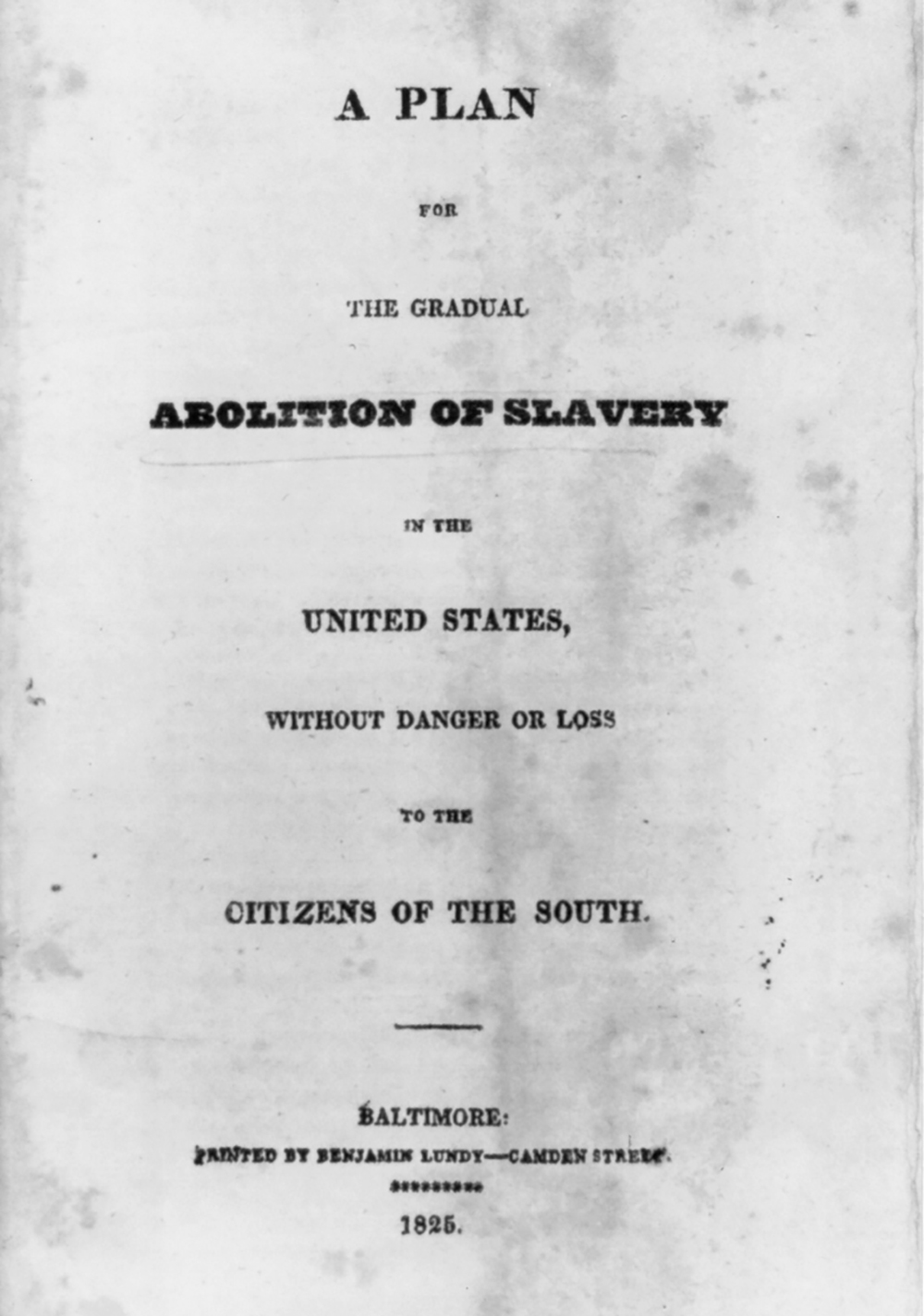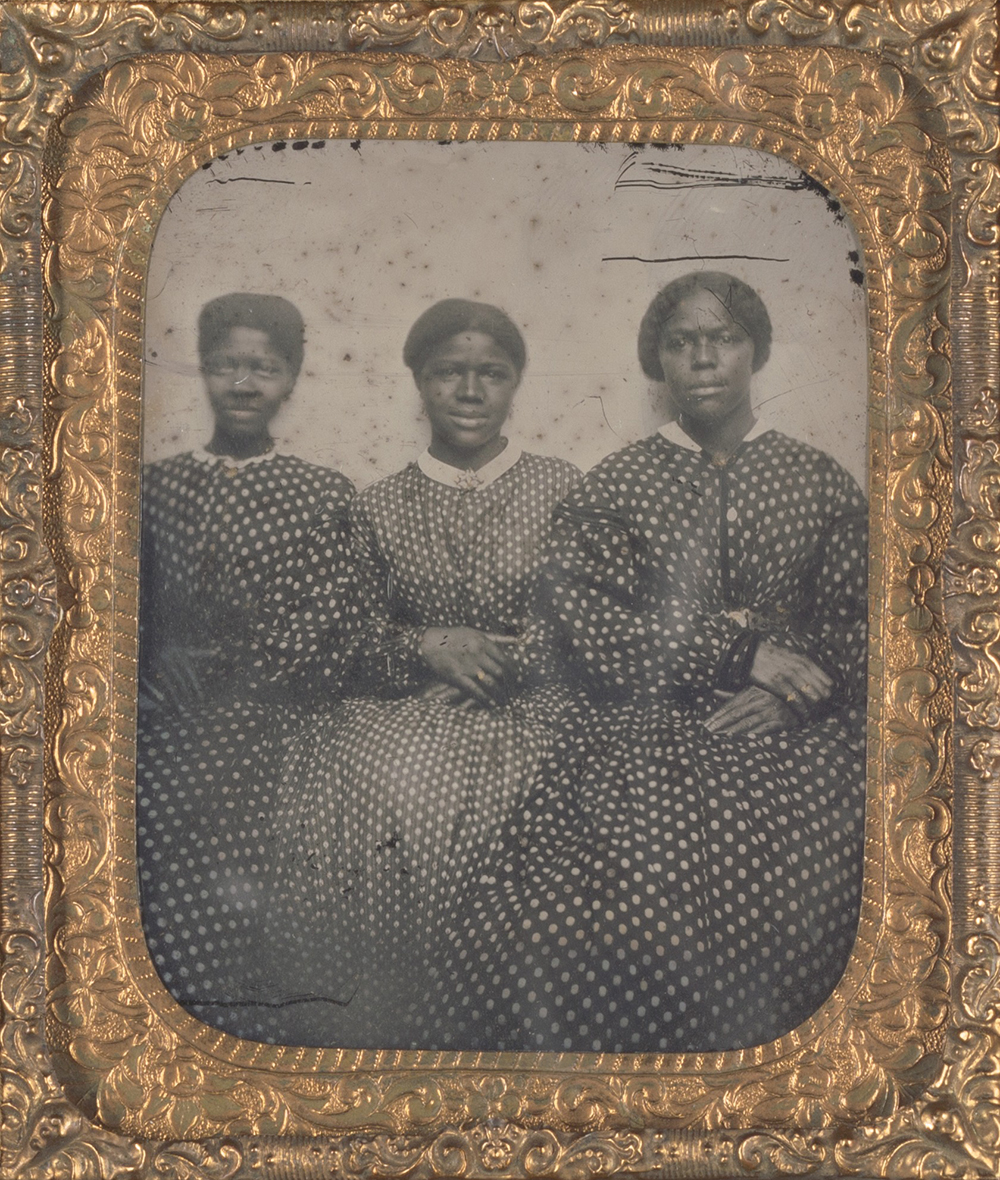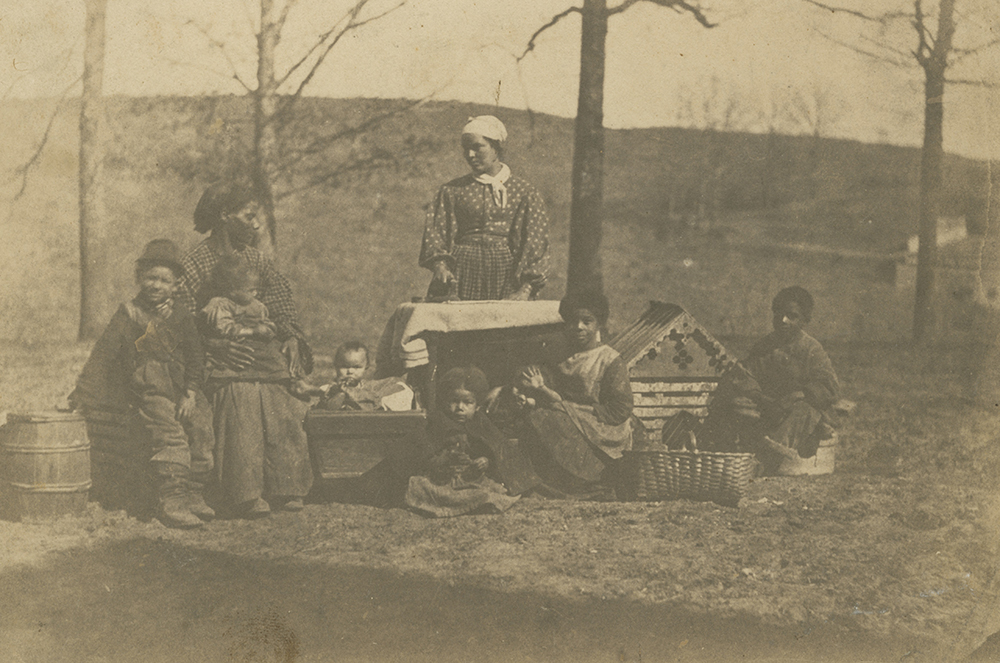
Breakfast Room at Belle Grove Plantation, White Chapel, Louisiana, by Walker Evans, 1935. Smithsonian American Art Museum, gift of Lee and Maria Friedlander, 2006.
Two years after South Carolina became the first state to secede from the United States in December 1860, President Abraham Lincoln addressed the Senate and House of Representatives, announcing his support for a plan that would pay reparations to slaveholders in border states (slave states that had not seceded) if they would implement gradual emancipation and pledge loyalty to the union. It was a last-ditch attempt to prevent further secession, and one that Lincoln justified with his opinion that “gradual, and not sudden, emancipation” would be “better for all.”
The resolution passed in April 1862, allocating $180 million to be disbursed to slaveholders in exchange for freeing the estimated 600,000 people “held in legitimate slavery.” It was one of the last plans for compensated emancipation, a form of government indemnification to slaveholders for the forcible removal of their property: people enslaved both by force and the law. (Throughout this piece I use property terms such as investment and market value only when needed to demonstrate the thinking behind the government’s actions; like the law itself, it nearly always framed emancipation from an enslaver’s perspective, rather than that of the enslaved.)
The United States continued its bloody Civil War for another three years, and this compensated emancipation proposal was never accepted in border states. But a similar plan was signed at the same time, and executed successfully, in Washington, DC. The District of Columbia Compensated Emancipation Act brought immediate emancipation to the region and promised compensation to enslavers who pledged loyalty to the Union and submitted claims for their losses. Former enslavers could claim up to $300 per slave but often received much less. Their written petitions detailing the capabilities of formerly enslaved individuals often requested larger amounts: one petition described “a sober and industrious man and, your petitioner believes, a professor of religion” that the slaveholder determined was “of the value of one thousand dollars in money.” An estimated 3,100 enslaved individuals gained their freedom with the law’s passage, while former slaveholders were given ninety days to submit their petitions in the months that followed. A district board of commissioners reviewed and approved the majority of the 966 petitions, compensating slaveholders for 2,981 enslaved people. It was considered a win for the Union; on the evening of the act’s passage, the New York Daily Tribune declared that “three thousand people may devoutly thank God tomorrow, and a nation of twenty million rejoice with them at their peaceful enfranchisement by the benign act of the Law.”

This case is often cited as the sole example of enslavers actually receiving indemnification—or what we might call reparations—for abolition, but similar compensation plans, such as the one Lincoln advocated for in border states, not only existed but were part of an ongoing effort to lessen the loss abolition posed to slaveholders. These earlier plans for compensated emancipation are what Lincoln referred to as “gradual” emancipation, and they shifted the financial burden of emancipation onto enslaved people rather than have the state or enslavers bear the costs themselves. Framing these laws as state-sanctioned restitution provides necessary context for contemporary debates surrounding reparations by offering alternative examples of compensation and proof of the nation’s willingness to pay up at politically beneficial moments.
The DC measure borrowed its language and design from emancipation schemes initiated decades earlier in slaveholding states such as New York, New Jersey, Pennsylvania, Connecticut, and Rhode Island. Gradual emancipation allowed white Northerners to perform abolition without facing any of its immediate aftermath.
The New York Manumission Society, an abolitionist organization, relied on a Lockean rhetoric of morality that emphasized natural rights while advocating for gradual emancipation. The society typically recommended that its members release bondspeople by age thirty-five. In 1786, a year after its founding, roughly half the Manumission Society owned slaves, including notable members John Jay and Alexander Hamilton. Despite abolitionists railing against the “avarice” and “treachery” of the slave trade, members justified voluntary manumission only after an enslaved individual’s most productive years were over by emphasizing a paternalistic obligation to civilize and Christianize prior to emancipation. (It’s hard to find solid data on Black life expectancy in the antebellum U.S., but at the time life expectancy for white men ranged between thirty and forty years, and it’s commonly noted that mortality rates among enslaved populations were much higher than among their white enslavers.)

For many abolitionists, their cause was not chiefly a moral one but a way of signaling political and geographical allegiances. Decades later, it became advantageous for free-state politicians to stand for abolition as a demonstration of Union loyalty; a state could be “free” if it passed any kind of emancipation legislation, regardless of the number of people still in bonds. Favoring delayed emancipation was also strategic. Abolitionists wanted to end the “sin” of slavery within the United States, yet simultaneously opposed the integration of Black men and women into American society. Gradual emancipation staved off the perceived threat the freedman posed to white slaveholders and allowed states to consider colonization schemes that would remove freed people from the country entirely. The Compensated Emancipation Act in Washington, DC, continued these efforts by allocating $100,000 to support the recolonization of freedmen and women to Africa. The emancipated, most of whom had lived in the United States their whole lives, rarely pursued the option.
Bishop Richard Allen, president of the American Society of Free Persons of Color, spoke out against the African colonization effort at an 1830 convention, lambasting abolitionists for attempting to relocate free people to a “much afflicted country.” The group announced its intention to colonize land in Canada—a place similar enough to America to feel like home, but still an escape from the enslavers and abolitionists who would rather send them across the ocean.
Enslaved people brought both immediate and future value to enslavers, which contributed to white abolitionists’ resistance to immediate emancipation. Though researchers disagree on the prevalence of systematic “slave breeding,” or forced pregnancy of enslaved women, the fundamental idea behind it holds true: for slaveholders, fertility was an investment. Slaveholders often encouraged family bonds and allowed marriages between enslaved couples, though they were not legally recognized. Such false magnanimity was considered a way of discouraging runaways and encouraging reproduction. Because children born to enslaved women were legally in bonds themselves, enslaved women were valued not only their current capacity for labor but also for their future reproductive abilities. “Chattel slavery,” which rhetorically aligned Black people with farm animals and legally categorized them as property under the law, extended to the womb. (Chattel and cattle share a common linguistic root, as does capital.) This “womb economy” became the basis of the gradual emancipation schemes in the North.
Between 1780 and 1804, all the Northern slaveholding states passed gradual emancipation statutes that led to the eventual abolition of slavery. Beginning with Pennsylvania’s Act for the Gradual Abolition of Slavery, the statutes proffered varying examples of “free womb laws,” which freed the next generation that otherwise would have been born in bondage. Pennsylvania’s 1780 act stated “that all servitude for life, or slavery of children, in consequence of the slavery of their mothers, in care of all children born within this state, from and after the passing of this act as aforesaid, shall be and hereby is utterly taken away, extinguished, and forever abolished.”

Pennsylvania’s act outlawed further importation of enslaved people and required slaveholders to register all enslaved people within the state by November 1, 1780, about eight months after its passage. Those who did not comply with the registration terms would face automatic emancipation of the people they held in bondage. After the deadline passed, conservative assemblymen demanded an extension and the re-enslavement of those automatically freed, eventually attempting to repeal the act itself. A 1781 editorial letter is believed to have been written by a man who achieved emancipation with his family through the noncompliance clause. In the letter, published in the September 21, 1781, issue of the Freedman’s Journal and addressed to the Pennsylvania Assembly, the writer, going by the name “Cato,” implores the Assembly to uphold the law: “To make a law to hang us all would be merciful, when compared with this [repeal]; for many of our masters would treat us with unheard-of barbarity, for daring to take the advantage (as we have done) of the law made in our favor.” The letter writer’s concern over facing retribution for his own emancipation was not unfounded; because Cato and his family were most likely emancipated through the noncompliance clause, a reversal of the act would place him back in bonds, and put him at risk of being treated as a runaway.
The decisiveness of the act’s language did not translate into its effects. While enslavers had been financially motivated to care for and support children of enslaved women, freeing the next generation at birth without emancipating their mothers would have likely motivated enslavers to choose abandonment or infanticide. Instead the state mandated that these children “shall be deemed to be and shall be by virtue of this act the servant of such person…who would in such case have been entitled to the service of such child, until such child shall attain unto the age of twenty-eight years.” Essentially, the next generation born in bonds would be free in name only until they reached twenty-eight or were voluntarily emancipated by their enslaver.
Twenty-eight was well past middle age given the estimated life expectancy and hardly warranted concerns over childhood abandonment. The system was clearly structured to exploit the free-womb generation’s most productive working years. This scheme left the older generation in bonds while minimizing the cost of gradual emancipation to slaveholders; by the time the incoming generation had reached legal freedom, their enslaver would probably be elderly or dead. New York adopted a nearly identical model in 1799, specifying twenty-eight years of service for bondsmen and twenty-five for bondswomen. Alongside New Jersey, which passed its own act in 1804, New York offered an alternative option to slaveholders overseeing free-born children: abandonment. New York declared that the enslaver could choose to “abandon his or her right to such service” after caring for the child until one year of age, at which point “every child abandoned as aforesaid shall be considered as paupers of the respective town or city.”
Though part of the reasoning behind these staggered plans was lawmakers’ desire to minimize the existence of abandoned children as much as possible, a 1973 paper by economist Claudia Dale Goldin argues that these systems lowered the costs to enslavers. In New York enslaved people were reclassified as indentured servants, meaning they remained in lifetime bonds but could not be sold. This elimination of the state’s slave trade, along with the limited contracts of “free womb” children, meant that the state’s “market value” of enslaved people dropped. By devaluing bondspeople over time, instead of removing them from the market at present value—as in Washington, DC, over sixty years later—the direct financial loss was mitigated. Much like the DC petitions, which offered up to $300 for “property loss” otherwise appraised at $1,000, the government’s devaluation of human capital also served as a form of partial reimbursement.

The issue with these pauper stipulations—aside from their inherent immorality—was that both New York’s and New Jersey’s Abolition Acts specified that these abandoned children would be maintained at the expense of the state, set at a maximum of $3 per month in New Jersey, and $3.50 in New York. The reimbursement motivated enslavers to abandon children; after minors were declared paupers, they could be placed back into the care of the enslaver, who would receive the monthly pension for care of the child. The state didn’t just subsidize emancipation for enslavers, it effectively paid them child support.
Enslavers were also no longer incentivized to care for the long-term health and physical ability of the people they enslaved. The impending loss of their unpaid labor prompted some enslavers to employ increasingly abusive disciplinary tactics in an attempt to wring more profits out of those approaching the age of emancipation. Abolition acts also did not prevent enslavers from selling individuals into other contracts. Pennsylvania developed an alternative slave trade in which enslaved people from neighboring states could be sold as indentured servants. Though those contracts were temporary, the loophole meant that slaveholders from other states could make a cash profit from the people they enslaved before gradual abolition eliminated the market. Indentured servitude implied a contractual exchange but was in effect an extended slavery—a manufacturing of debt that would be repeated through sharecropping, debt buyers, high-cost lenders, and discriminatory interest rates—and an empty win for white consciences.
As gradual abolition plans staggered emancipation, it became common for marriages to exist between formerly enslaved people, now “indentured,” and freed people, who often aimed to buy out their spouses’ remaining contracts. Thomas L. Jennings, a free-born New Yorker who in 1821 became the first Black man to receive a patent, for creating an early iteration of dry cleaning, used the profits from his invention to purchase the freedom of his wife, Elizabeth, who was born enslaved in 1798, and their three children, who were indentured under New York’s 1799 Gradual Abolition Act.
Gradual emancipation did eventually bring about abolition in the Northern states. Between 1790 and 1800, the population of enslaved individuals in Pennsylvania was halved (though that might not be the number of people who gained freedom, given the unsanctioned interstate trade). By 1840 only sixty-four people remained in bonds, or 0.1 percent of the state’s nonwhite population. Ten years later it would be zero.
With the Civil War under way and Lincoln’s compensated-emancipation proposal extended to border states, Union supporters in Missouri lamented the state’s refusal to pursue emancipation. Yet their narrow definition of freedom demonstrated the weakness of the proposed plans. One opinion writer for the New York Times wrote that Missouri, the “empire state among the slave states,” could have set an example by “voluntarily throwing off slavery as a nuisance and a burden, and adopting free labor as the surest agency of peace, wealth, and greatness.” A Kentucky man replied that the system likely would have inspired greater turmoil, not worth the paltry sum of $300 (roughly $6,200 today) and the associated taxation, and that the state should accept a method of gradual emancipation (“the longer the better”) similar to that of the Northern states. His argument illustrates the way in which the United States’ abolition plans also functioned to suppress Black influence and exploit Black labor; by renaming slavery as indentured servitude, they endorsed forms of unfree and exploitative labor that would be reenacted after Reconstruction. The Kentucky writer described this system of disenfranchisement as a triumph: “In two generations the last of the aged slaves would be dying off, and a class of white yeomanry would occupy their places.”
Though historically systems like gradual manumission through “apprenticeship” have been posited as “opportunities” for enslaved people to purchase or “earn” their freedom, in truth this abolition plan was structured so that enslaved people would pay the indemnification that the state believed was owed to enslavers. Not only did the Northern states eschew fiscal responsibility for these “reparations” and transfer it to enslaved people, but instead of resolving a practice that they decried as morally corrupt, by adopting any reparative policy they inherently endorsed the underlying ideology of slavery. By situating abolition as forced property removal, the United States government acknowledged slavery as legitimate property ownership long after emancipation was complete.